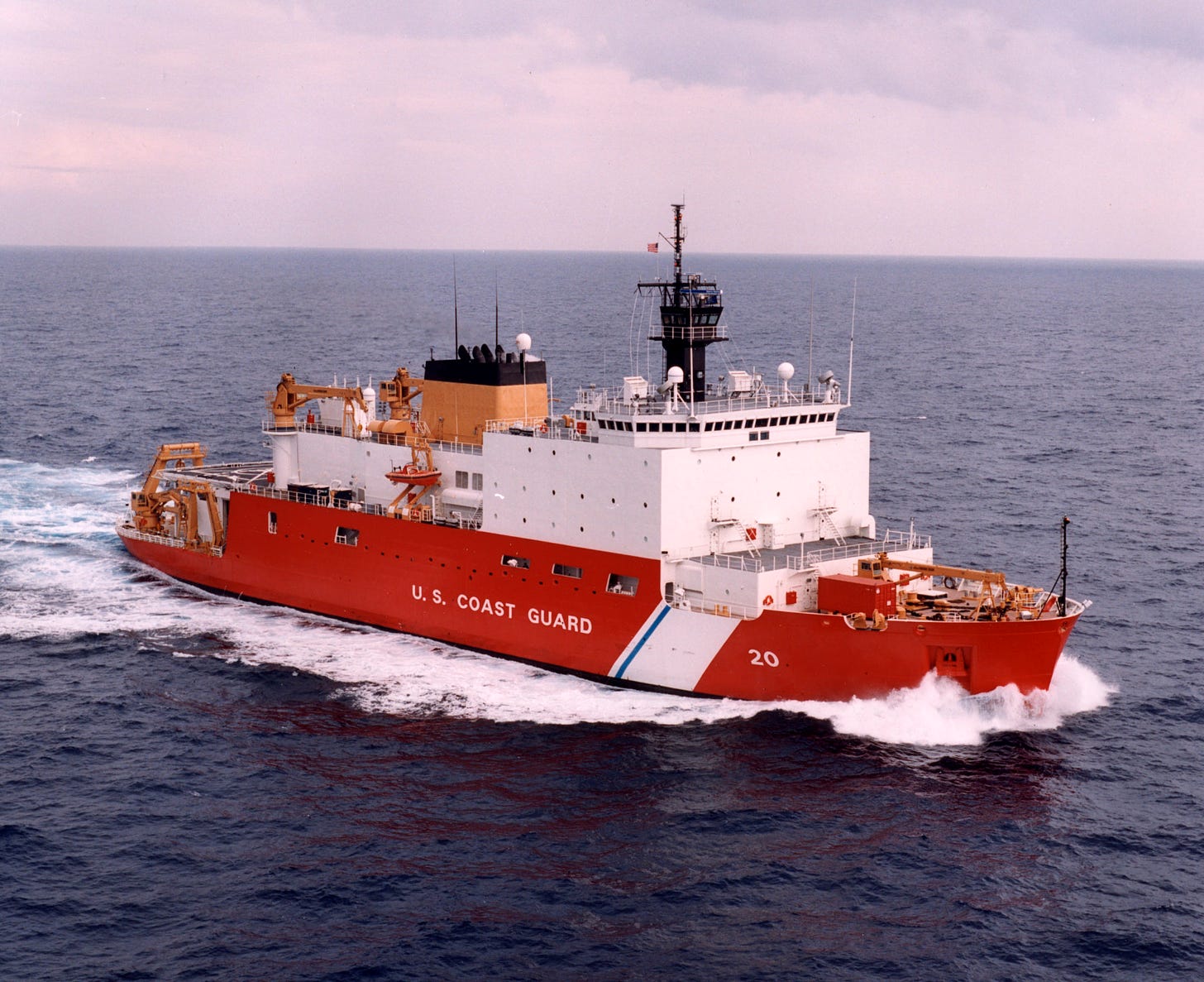Four decades, countless studies, one icebreaker built.
U.S. Government Studies dating back to 1984 call for additional polar icebreakers.
Note: This series considers polar icebreakers, not harbor or other icebreakers such as those used on the Great Lakes.
If you’re new to the channel, it might be helpful to look at my earlier pieces about polar icebreakers:
A Quick Note about Icebreakers
How Many Icebreakers Does the U.S. Coast Guard Need? Reviewing the Requirements

In my research for the previous article How Many Icebreakers Does the U.S. Coast Guard Need? Reviewing the Requirements I read through many studies (or their results, if the studies themselves weren’t readily available) going back to 1984 that looked at the requirements for the U.S. Coast Guard’s polar icebreaking program.
My conclusion: for nearly forty years, which equates to almost the duration of eleven World War IIs (CDR Salamander’s favorite metric), the U.S. Government has known that it needed more polar icebreakers.
Yet in that entire time, only one new polar icebreaker was added to the USCG’s fleet- the Healy, a ‘medium’ icebreaker designed primarily for scientific research.
In what follows I’ve cited conclusions from some of these reports (by no means all of them) in chronological order. The number in parenthesis after the year is the number of polar icebreakers in USCG active service when the report was released.
1984: (3)
The Coast Guard should maintain a fleet of four polar icebreakers to meet stated requirements1.
2007: (2)
National interests in the polar regions require that the United States immediately program, budget, design, and construct two new polar ice breakers to be operated by the U.S. Coast Guard2.
2010: (2)
The Commission urges the President and Congress to commit to replacing the nation’s two polar class icebreakers3.
2010: (1)
The Coast Guard requires three heavy and three medium icebreakers to fulfill its statutory missions.
The Coast Guard requires six heavy and four medium icebreakers to fulfill its sta-tutory missions and maintain the continuous presence requirements of the Naval Operations Concept4.
2011 (1)
The Coast Guard is unable to accomplish its Arctic missions with the current icebreaker resources.
The Coast Guard’s icebreaking resources are unlikely to meet future demands.
Further, the Coast Guard has not followed its life cycle replacement plan, which requires replacement of icebreaking ships after 30 years in service.
Should the Coast Guard not obtain funding for new icebreakers or major service life extensions for its existing icebreakers with sufficient lead-time, the United States will have no heavy icebreaking capability beyond 2020 and no polar icebreaking capability of any kind by 2029. Without the continued use of icebreakers, the United States will lose its ability to maintain a presence in the Polar Regions, the Coast Guard’s expertise to perform ice operations will continue to diminish, and missions will continue to go unmet5.
2013: (2)
Current requirements and future projections based upon cutter demand modeling, as detailed in the HLMAR [High Latitude Mission Analysis Report], indicate the Coast Guard will need to expand its icebreaking capacity, potentially requiring a fleet of up to six icebreakers (3 heavy and 3 medium) to adequately meet mission demands in the high latitudes6.
2017 (2):
Finding: The United States has insufficient assets to protect its interests, implement U.S. policy, execute its laws, and meet its obligations in the Arctic and Antarctic because it lacks adequate icebreaking capability.
Recommendation: The United States Congress should fund the construction of four polar icebreakers of common design that would be owned and operated by the United States Coast Guard (USCG)7.
2023 (2)
The Coast Guard testified in April, June, and November 2023 that a new Coast Guard fleet mix analysis concluded that the service will require a total of eight to nine polar icebreakers, including four to five heavy polar icebreakers and four to five medium polar icebreakers, to perform its polar (i.e., Arctic and Antarctic) missions in coming years8.
Another example of problem admiration.
Thanks for reading, subscribing, and spreading the word.
PGR
United States Polar Icebreaker Requirements Study (11 July 1984)
United States Coast Guard High Latitude Region Mission Analysis Capstone Summary, July 2010
Department of Homeland Security, Polar Icebreaking Recapitalization Project Mission Need Statement, Version 1.0, approved by DHS June 28, 2013
Spoken testimony as cited in Congressional Research Service Coast Guard Polar Security Cutter (Polar Icebreaker) Program: Background and Issues for Congress Updated January 17, 2024.




I am, of course, one of the expensive consultants I disparage above. But I have a clean conscience since the government never takes any of the advice I give anyway.
One of my acquaintances who lives in the Vancouver area, a city with an acute housing shortage and homeless problem, noted that the city government has done a number of studies on how to combat this problem, employing lots of bureaucrats and consultants at more than $100K salaries, while the problem has continually gotten worse. Since “the purpose of a system is what it does”, my friend concluded that the purpose of homelessness studies is to employ expensive consultants.
I say all this because it reminds me of your article, which seems to indicate that the purpose of the ice breaker issue is not to build ice breakers but employ expensive consultants.